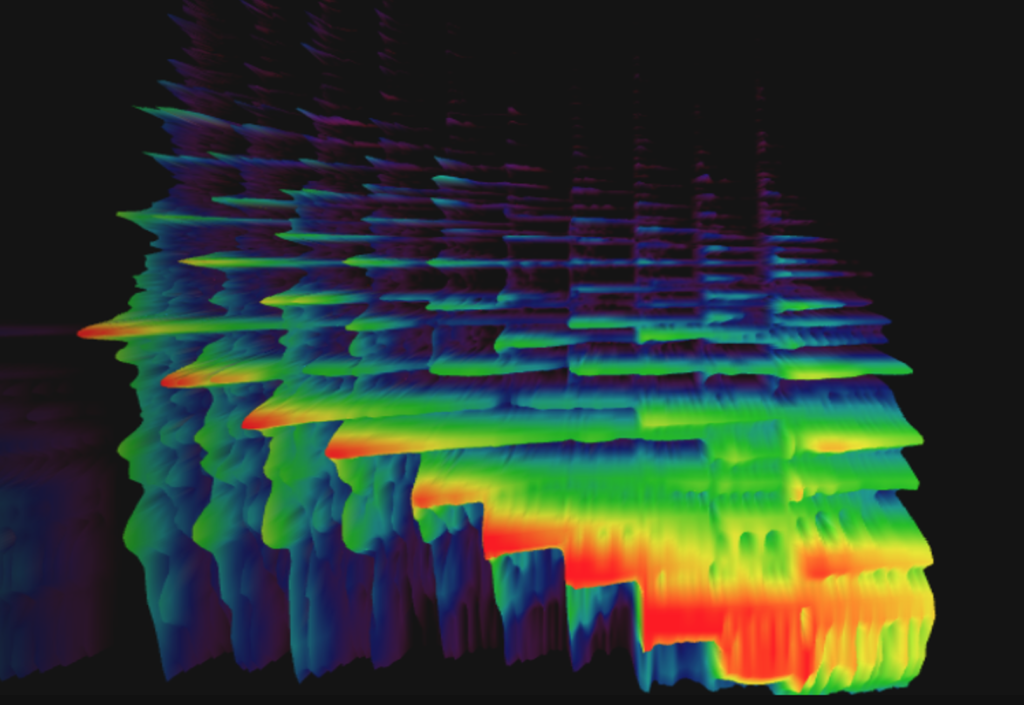
Harp Spectrogram
For those who are ten, or have a ten-year-old in your den with you, this week’s “stuff for kids to do with sound” will head into visualizing sound.
Humans, along with most terrestrial animals depend on sight as well as sound to inform us of our surroundings, although we all use it differently. I have found that some people are visual-dominant, and others hearing-dominant.
There is a not uncommon neurological condition called synesthesia that enriches some people’s perceptions by letting them see colors when they hear a sound. Romantic composer Alexander Scriabin saw sound this way and shared it with his audience in his tone poem Prometheus – Poem of Fire with what was probably the first musical light show. But how else might we see sound? There happens to be tools for this – ones that translate acoustical energy into visual patterns.
A simple one, called an “oscilloscope” can turn the sound from your computer’s microphone input into an X-Y graph with amplitude on the “Y axis” (height) and time on the “X axis” (width). These can be really useful diagnostic tools in the field of electronics, but it doesn’t tell us much about sound.
A tool called a “Spectrogram” can provide a much more detailed representation of sound. In this case frequency, or “pitch” is on the “Y axis,” time is on the “X axis,” and amplitude is on the “Z axis” (coming toward you). This version allows you to select sample inputs, or, the microphone on your computer.
But these tools are not really “seeing sound;” rather they are converting the sounds received by a microphone into electrical signals, which are then processed into a visual representation of the sound.
If you want to really see the visual artifacts of acoustical energy, you’ll need a couple of wine glasses. This experiment on the Acoustical Society page demonstrates “sympathetic resonance” in which one of two glasses tuned to the same pitch resonates sympathetically when you play the other wine glass. But what this experiment misses – and where you really see sound, is when you look at the surface of the liquid in the wine glass (presumably water if you’re 10). You will see delicate patterns that are artifacts of the vibration of the glass – which is also making the sound!
Next week’s activities – “don’t tell you mother I told you how to do this…”
